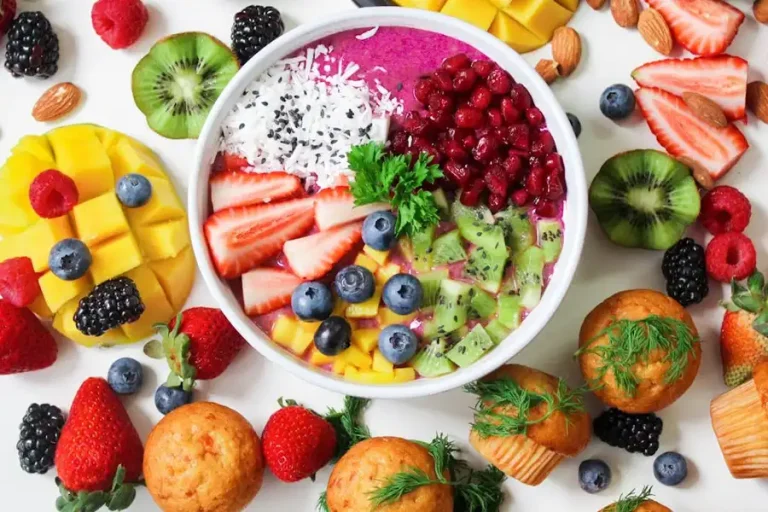A well-thought-out diet is crucial to a child’s recovery after a tonsillectomy. The right foods can ease discomfort, prevent dehydration, and reduce the risk of complications like infections or excessive bleeding.
Following a tonsillectomy diet day by day for child ensures that caregivers provide the right foods at the right time, supporting healing while keeping the child comfortable.
This guide breaks down the ideal diet for a child post-tonsillectomy, outlining what to serve—and what to avoid—day by day.
Table of Contents
Tonsillectomy Diet Day by Day for Child Guide
Day 1: Immediate Post-Surgery – Focus on Hydration
The first 24 hours are all about keeping your child hydrated while minimizing throat irritation. Since swallowing can be painful, gentle and soothing liquids are the best choice.
Best Foods & Drinks
- Cold liquids: Ice chips, chilled water, diluted apple juice
- Mild broths: Room-temperature chicken or vegetable broth
- Non-acidic drinks: Avoid anything that might sting or burn the throat
Foods & Drinks to Avoid
🚫 Citrus juices (orange, lemonade)
🚫 Hot beverages or soups
🚫 Carbonated drinks (soda, sparkling water)
Caregiver Tips
✔️ If swallowing is too painful, use a spoon or syringe for small sips.
✔️ Avoid using straws, as they can increase bleeding risk.
✔️ Offer fluids every 30–60 minutes to prevent dehydration.
Keeping your child hydrated on Day 1 lays the foundation for an easier recovery.
Days 2–3: Introducing Soft, Soothing Foods
As healing begins, the focus shifts to maintaining hydration while slowly introducing smooth, nutrient-rich foods. The throat may still be sore, so opt for lukewarm or cold options that won’t cause irritation.
Day 2: Expanding Liquids
- Gelatin (Jell-O): A cool, easy-to-swallow treat
- Lukewarm herbal tea: Chamomile or peppermint for gentle hydration
- Electrolyte popsicles: Helps replenish fluids while soothing the throat
Day 3: Soft, Blended Foods
- Lukewarm bone broth: Packed with nutrients and easy on the throat
- Blended creamy soups (no chunks): Butternut squash, potato, or chicken cream soup
- Pudding or custard: Soft and cool for added comfort
What to Avoid
🚫 Spicy, acidic, or hot foods
🚫 Crunchy or rough textures
🚫 Dairy-heavy foods (can cause mucus buildup)
By following this gentle approach, you help your child transition to soft foods without causing discomfort.
Days 4–5: Moving to Soft, Mild Solids
At this stage, the throat is still healing, but your child may be ready for slightly more solid foods. The key is to stick with soft, easy-to-swallow options that provide essential nutrients.
Safe Foods to Introduce
🥑 Soft fruits: Mashed bananas, applesauce, avocado
🥣 Mild carbs: Oatmeal (not too thick), mashed potatoes (without skins)
🥚 Gentle proteins: Scrambled eggs, smooth nut-free spreads
🥤 Smoothies: Blended with yogurt or milk (ensure no seeds or chunks)
What to Avoid
🚫 Crunchy foods (chips, toast, raw vegetables)
🚫 Spicy or highly seasoned meals
🚫 Acidic foods (tomato sauce, citrus)
Introducing mild, bland foods gradually prevents unnecessary irritation while keeping your child nourished.
Days 6–7: Expanding Texture and Variety
As the throat continues to heal, your child can begin eating semi-soft foods with more texture. However, it’s still important to avoid anything too rough or difficult to chew.
Best Food Choices
🍝 Soft pasta: Macaroni and cheese, well-cooked noodles
🍚 Overcooked rice: Soft and easy to swallow
🥕 Steamed vegetables: Mashed carrots, squash, zucchini
🐟 Moist, tender proteins: Shredded chicken or fish (no bones)
What to Avoid
🚫 Hard, dry, or crunchy foods (nuts, crackers, chips)
🚫 Spicy or acidic ingredients
🚫 Tough, chewy meats
Slowly reintroducing more texture ensures a smoother transition to regular eating.
Caregivers should continue to follow the tonsillectomy diet day by day for child, making adjustments based on the child’s comfort level. If pain or bleeding occurs, return to softer foods and consult a healthcare provider if necessary.
Beyond Day 7: Returning to a Normal Diet
By now, most children can begin eating a wider variety of foods, but some precautions still apply to prevent irritation and setbacks.
Reintroducing Foods Safely
✔️ Start with soft fruits (ripe pears, peeled apples), lightly toasted bread
✔️ Gradually increase variety (cooked veggies, tender meats, mild dairy)
✔️ Keep hydration a priority to prevent dryness or discomfort
Foods to Avoid for 2–3 More Weeks
🚫 Hard, sharp foods (popcorn, raw apples, crunchy chips)
🚫 Spicy or acidic foods (citrus, tomato sauces)
🚫 Sticky or chewy foods (gummy candies, tough meats)
If certain foods cause discomfort, return to softer options and try again later.
Key Tips for Parents
💧 Hydration: Offer water, diluted juice, or electrolyte drinks frequently. Avoid dehydration, as it can worsen pain.
🩹 Pain Management: Cold foods (popsicles, ice cream) can help with swelling. Follow the doctor’s recommendations for pain relief.
⚠️ Important Precautions: Avoid red-colored drinks (they can mimic blood if vomiting occurs) and watch for signs of bleeding.
When to Call the Doctor
While mild discomfort is normal, certain symptoms require immediate medical attention:
🚨 Signs of Dehydration:
- Less urination, dry mouth, no tears when crying
- Excessive sleepiness or irritability
🚨 Bleeding Concerns:
- Bright red blood in saliva or frequent swallowing (could indicate hidden bleeding)
- Vomiting blood or dark, coffee-ground-like material
🚨 Other Warning Signs:
- Severe pain not relieved by medication
- High fever (above 101.3°F / 38.5°C)
- Difficulty breathing or swallowing
If any of these symptoms occur, seek medical care immediately.
Final Thoughts
Following a tonsillectomy diet day by day for child provides a structured approach to recovery, ensuring proper hydration, pain management, and nutrition at each stage. Gradually progressing from liquids to soft foods and then back to a normal diet helps minimize discomfort and reduce the risk of complications.
Every child heals at their own pace, so patience is essential. If a food causes discomfort, go back to gentler options before trying again. With careful monitoring and the right nutrition, your little one will be back to their usual meals in no time.







